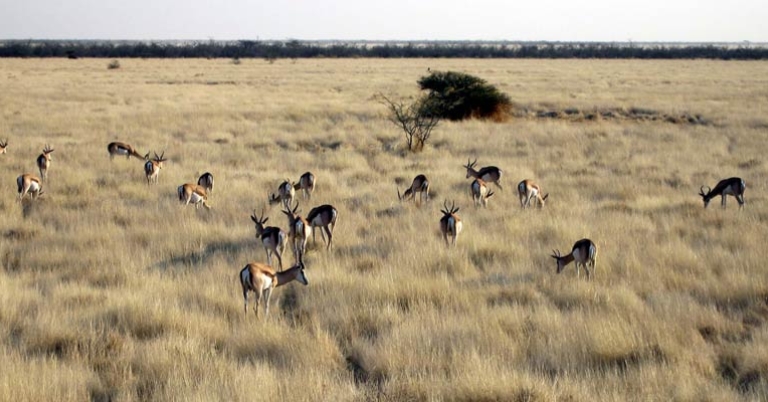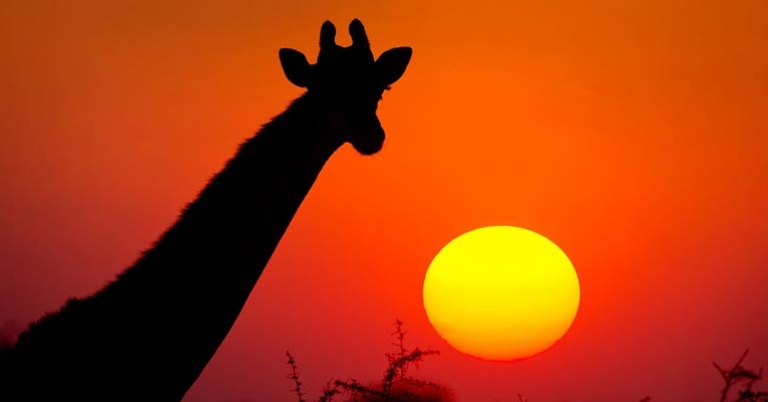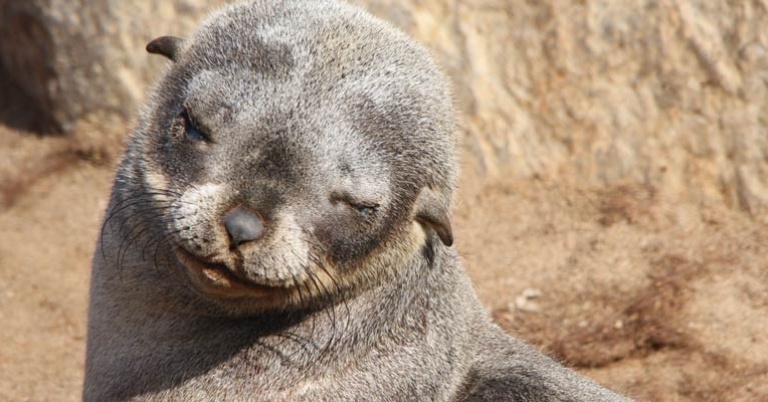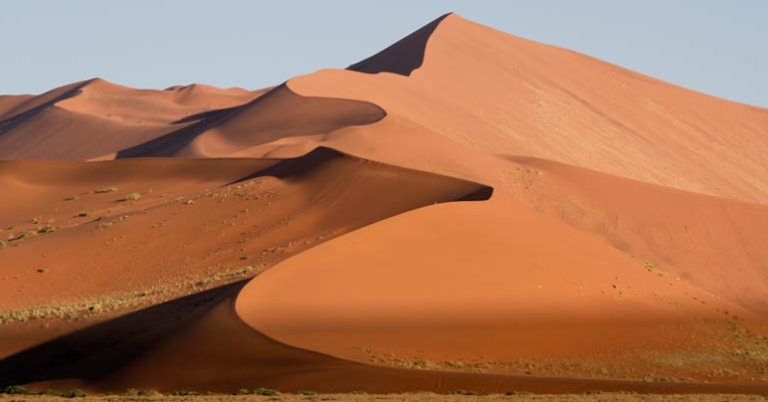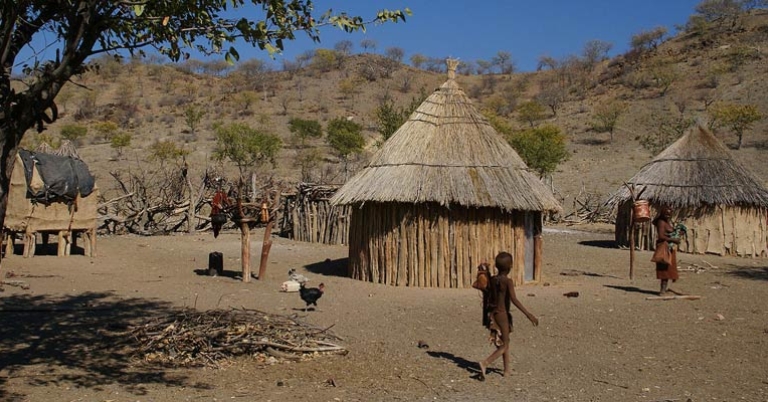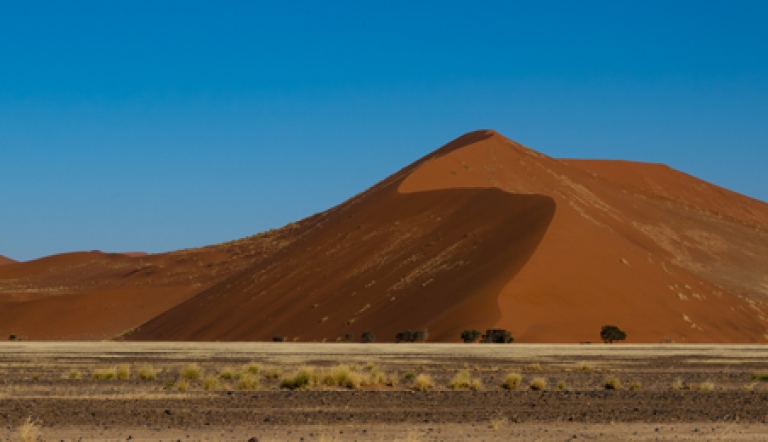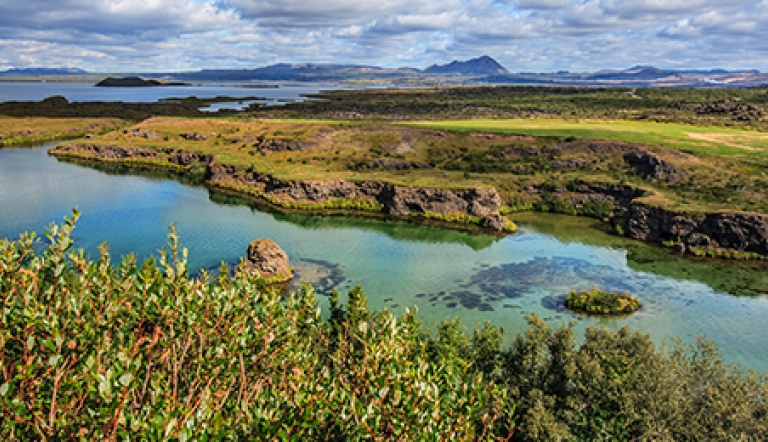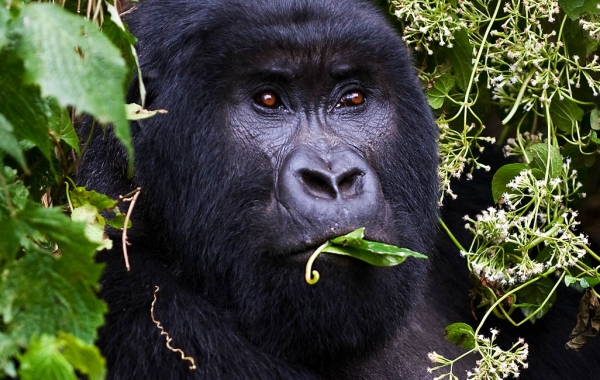The Wild Namibia: Exploring the Natural Wonders
About this trip
Namibia draws in visitors with its wide open spaces, and yet the country is packed with potential. Take time to visit the world’s oldest desert, the Namib, as well as surrounding safari areas with exquisite flora, towering red dunes, and fascinating geological formations. Game drives in Etosha National Park include the “Big Five,” plus giraffes, zebras, wildebeest, antelopes, and more. Help with tracking leopards and spotted hyenas that have been rehabilitated and released by the AfriCat Foundation. You’ll also have the chance to learn about Namibia’s cultural history as you visit Twyfelfontein, home to one of the largest concentrations of petroglyphs in Africa, and learn about the Himba, one of the last truly traditional peoples of Namibia.
Highlights
- Meet local residents, visit markets and taverns, and enjoy a traditional meal during a township tour in Swakopmund.
- Discover the Skeleton Coast and the largest colony of Cape fur seals at Cape Cross Seal Reserve.
- Visit the AfriCat Foundation, the largest cheetah and leopard rescue-and-release program in the world, for close encounters with these majestic big cats.
- Immerse yourself in the colorful landscapes, tabletop mountains, rock formations, giant granite boulders, and bizarre-looking vegetation in Damaraland.
- Embark on thrilling wildlife-viewing drives in Etosha National Park, where possible species sightings include 114 mammals, 340-plus birds, and 126 reptiles and amphibians.
Activity Level 2: Easy-Moderate
This safari has a cultural and natural focus, and covers diverse ecosystems: the fur seal colonies of the (Atlantic) Skeleton Coast, the Namib Desert, the bushlands of Etosha National Park, the giant Sossusvlei dunes, and beyond. Daily hikes and walks last from about 30 minutes to 2.5 hours. Most challenging are the 1.8-mile roundtrip walk through the Sossusvlei dunes; a 100-foot canyon descent/ascent; and a 1–1.5 hour hike over unsteady terrain at Twyfelfontein. There are some early morning game drives and picnic lunches in the bush so you may observe wildlife at their most active times. Except for the first few months of the year, the weather is generally warm to hot and dry (70°–90°F), with little rain. Overland transfers and game drives use state-of-the-art, air-conditioned, 4x4 Toyota Land Cruisers, with large windows and pop-up roofs for optimal viewing. Some days involve long but scenic drives of up to 6 hours, often over bumpy and dusty terrain.
$10,995
Land Cost
Group size
Book 10 travelers and 1 group
leader travels for free
What makes us different
Rich content
Worry-free Planning & Travel
Wildlife up-close
Cultural immersion
Sustainable travel
Custom-tailored trips
Daily Itinerary
Print ItineraryU.S.A
Day 1Windhoek
Day 2Sossusvlei
Day 3Sossusvlei
Day 4Swakopmund
Day 5Swakopmund
Day 6Damaraland
Day 7Damaraland
Day 8Etosha National Park
Day 9Etosha National Park
Day 10Etosha National Park
Day 11Okonjima Plains
Day 12Okonjima Plains
Day 13Windhoek
Day 14Depart
Day 15Pricing
Print Pricing$10,995
Land Cost
Group size
Book 10 travelers and 1 group
leader travels for free
What's Included
- Private transportation for tours and transfers
- Full time guide for the duration of your program
- Non alcoholic beverage with meals
- Carbon Offset
What's Not Included
- International airfare
- Tips
- Travel Insurance
Pricing Details
Prices are valid for travel from Jan 1, 2024 - Dec 15, 2026. Holiday surcharges may apply.
Travel Info
Print Travel InfoEntry & Exit Requirements
U.S. citizens must have a valid passport to enter Namibia. Passports must be valid for at least six months after your date of entry into Namibia and must have 3 or more blank passport pages.
In addition, U.S. citizens must have a visa to enter Namibia. We strongly recommend applying for your visa online in advance; to do so, visit https://eservices.mhaiss.gov.na/visaonarrival and select "New Visa on Arrival Application."
You will need to create an account and then complete the application. Be prepared with your passport, confirmation of accommodations and travel itinerary, proof of medical/travel insurance, and confirmation of adequate funds (which simply requires a confirmation click). If traveling with minor children, you will also need a full birth certificate and parental consent letter.
The cost for the Visa on Arrival is NAD $1,600 per person (approximately USD $90). This fee is subject to change at any time without prior notice.
The estimated processing time for a Visa on Arrival application is 48 hours. We recommend applying well in advance of your planned travel date to allow for possible delays.
Once approved, print your e-visa permit with the QR code for presentation on arrival. In Namibia, you’ll need to complete and sign a presented arrival form and present this to an immigration official.
If you are not traveling with a U.S. passport, please check with the Embassy of Namibia for the requirements based on your nationality.
Health Information
IMMUNIZATIONS
The Centers for Disease Control recommends that all travelers be up to date on routine vaccinations such as measles-mumps-rubella (MMR) vaccine, diphtheria-pertussis-tetanus vaccine, varicella (chicken pox) vaccine, and your yearly flu shot before every trip.
There are no vaccinations required for entry into Namibia, unless you are traveling from a country where yellow fever transmission is a risk (including transiting 12 or more hours through an airport of country with risk of yellow fever), in which case proof of yellow fever vaccination is required.
The CDC recommends vaccination against hepatitis A, hepatitis B, and typhoid for most unvaccinated travelers to Namibia.
Please consult your physician for additional information and recommendations based on your individual circumstances.
MALARIA
The CDC warns that travelers may be at risk for exposure to malaria in Namibia, primarily in the northern regions of the country. Malaria is caused by a parasite found in Anopheles mosquitos, which are active from dusk until dawn. Prevention is twofold: the use of anti-malarial drugs and the prevention of insect bites. To protect against insect bites, cover exposed skin with lightweight, long-sleeved shirts and pants, consider treating clothes with permethrin, and use an insect repellent containing an active ingredient like DEET or picaridin. Apply sunscreen first, followed by the repellent (preferably 20 minutes later). If you choose to use an anti-malarial drug, as recommended by the CDC, see your physician for a prescription.
OTHER INSECT-BORNE ILLNESSES
In addition to malaria, the CDC warns that travelers may be at risk for other illnesses transmitted by mosquitos, ticks, or sand flies, such as dengue fever, chikungunya, African tick-bite fever, and others. Travelers are advised to protect themselves against insect bites using the measures noted above.
After spending time outdoors, especially in grassy or wooded areas, the CDC recommends showering and conducting a full-body check for ticks. If you find a tick attached to your skin, safely remove it as soon as possible.
WILDLIFE
Follow all instructions from your guides regarding wildlife. Animals may become aggressive to protect themselves, their young or their mates, or to guard a food supply. Do not make sudden movements either toward or away from them, as this may be interpreted as threatening or territorial. Avoid stray dogs, as they may carry rabies. In the unlikely event of being bitten or scratched by a dog or other mammal, clean the wound and control bleeding. Seek medical attention immediately.
SUN EXPOSURE
The effects of the sun can be damaging to the eyes and skin. Spending time outdoors exposes you to the sun’s harmful ultraviolet (UV) rays, even on cloudy days. To protect yourself from the sun, use a broad spectrum sunscreen of at least SPF 15, protect skin with clothing, wear a wide-brimmed hat and sunglasses, and drink plenty of fluids.
Respiratory Illness Protocols
Please review our Respiratory Illness Protocols page, which explains our policy and procedures if you or another traveler should develop symptoms of a respiratory illness during your trip. Your participation in a Holbrook Travel program indicates that you are in agreement with these protocols.
Resources
Print ResourcesPacking Recommendations
Everyone has personal preferences when it comes to packing; for this reason, the information below is offered as a general guide and not a definitive list. You know yourself best: Use your discretion and pack what you think will serve you, based on your personal preferences and specific itinerary.
You may find many of the items below in the New Headings Gear Store. Use code HolbrookGuest10 for a 10% discount on your purchase.
CLOTHING
Casual, comfortable clothing is suitable for most activities in Namibia. You may wish to bring a slightly nicer outfit or two if your itinerary includes dinners out or more formal activities.
Bring enough clothing suitable for the length of your program. If you prefer to pack light, note that some hotels offer laundry services (at additional cost).
Temperatures can fluctuate significantly between day and night. Days are typically hot, while nights can be chilly, sometimes with frost in the desert and during winter months. Pack clothing that can be worn in layers to adapt to changes in weather and temperature.
Bring clothes in neutral or muted colors such as green, khaki, brown, or grey. We recommend that you avoid wearing bright colors or white as they can easily be spotted by animals.
Army-style camouflage clothing is illegal in Namibia.
Locals tend to dress conservatively. Revealing tank tops and shorts/skirts cut above the knee are typically not recommended in towns.
- A combination of short-sleeved and light- to medium-weight long-sleeved shirts
- Shorts and/or skirts
- A combination of lightweight, quick-drying long pants and medium-weight pants or trousers
- Undergarments
- Sleepwear
- Light- to medium-weight jacket, fleece, or sweater/sweatshirt – Evenings can be cold, especially in desert areas and during June to September
- Bathing suit – Some hotels have pools.
- Socks – Bring extra pairs.
- Shoes – Consider your specific itinerary when choosing footwear. For most programs, you’ll likely want at least one pair of comfortable, closed-toe walking or hiking shoes with thorn-proof soles, suitable for hikes and walking over uneven terrain. Sturdier hiking boots may be appropriate for more active itineraries. In addition, many participants opt for a pair of sturdy sport-strap sandals (e.g. Keens, Tevas, or similar), plus a pair of casual flip-flops or sandals for around your hotel.
- Lightweight rain jacket, hooded poncho, and/or windbreaker
- Visor or wide-brimmed sun hat
- Bandana, scarf, or gaiter
Personal Toiletries
Pack toiletries based on your personal preferences and habits.
- Shampoo, conditioner, lotion, deodorant/antiperspirant , etc. – If possible, avoid strong fragrances if you are sensitive to insect bites and to be considerate of your fellow travelers.
- Soap and washcloth or a small, quick-drying microfiber towel – Washcloths are not standard in all hotels. If you normally use a washcloth, you may wish to bring one from home.
- Hairbrush, comb, hair ties, shower cap
- Toothbrush and toothpaste
- Razor
- Ear plugs, especially if you are a light sleeper
- Personal hygiene products
- Insect repellent with DEET or picaridin (see note below about treating clothing with permethrin)
- Sunscreen and lip balm with SPF
- Aloe vera gel
- A travel pack of tissues – also useful as napkins or toilet paper if needed
In addition to your personal toiletries, it is useful to pack a small medical kit, which you can easily prepare. Helpful items might include: bandages, antihistamine, a pain reliever, motion sickness and/or altitude sickness medication (if you are prone to either), anti-diarrhea medicine, individually wrapped pre-moistened towelettes and/or hand sanitizer, antibiotic ointment, anti-fungal cream, moleskin for blisters, eye drops, tweezers, a mini sewing kit, and an extra pair of disposable contact lenses or eyeglasses if you wear them.
Days before you leave home, you may wish to consider spraying any clothing, socks, and shoes with the insecticide permethrin to repel irritating pests and prevent the spread of disease. A recommended brand is Sawyer. Carefully read all instructions before use. Please note permethrin is highly toxic to cats and fish, and some aerosol products may be harmful to birds. Side effects may include minor itching, burning, or redness. You may want to use a laundry marker to label and keep track of which socks are permethrinized. Only one application per item is necessary; permethrin on treated clothes remains effective through several washings. Permethrin should NOT be applied directly to skin.
Miscellaneous
Remember to pack valuables such as your passport, cash/credit cards, and medications in your carry-on luggage.
- Passport and photocopies of all travel documentation
- Personal insurance card and travel insurance information
- Money – ATM/credit card, traveler's checks, and/or cash; small bills in good condition are recommended
- Prescription medicines (if applicable), with a copy of the prescription
- Yellow fever certificate (if applicable; only if traveling from a country where yellow fever transmission is a risk
- Sunglasses with strap
- Small day pack for hikes and excursions
- Flashlight and/or head lamp
- Travel alarm clock or inexpensive waterproof wristwatch with alarm – Not all hotels provide alarm clocks.
- A pocket calculator or phone to assist with conversions and currency exchange
- Camera and related equipment, such as charger, lenses, and extra memory cards
- Binoculars with lens cleaner
- Reusable water bottle
- Non-perishable snacks
- Pocket-knife or multipurpose tool - Pack in your checked luggage
- Zip-top style bags – useful for packing toiletries, sorting clothing, storing damp or muddy shoes, or as a dry bag for protecting electronics
- Notepad or travel journal and pen
- Music or reading material for down time, long bus drives, or on the airplane, and a portable bright light to read by
- Collapsible walking stick with rubber tip
- A small quantity of laundry detergent if you’ll be washing clothing by hand
- Money belt
- Chargers, voltage converter, and plug adapter for electronics
Note that Namibia has implemented a complete ban on plastic shopping/grocery bags in all game parks and reserves. Visitors are requested to avoid bringing these types of plastic bags with them. Reusable zip-top style bags are still permitted.

Questions
For more information, contact us at 800-451-7111 or email travel@holbrooktravel.com.


